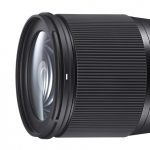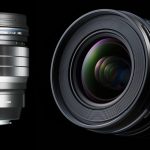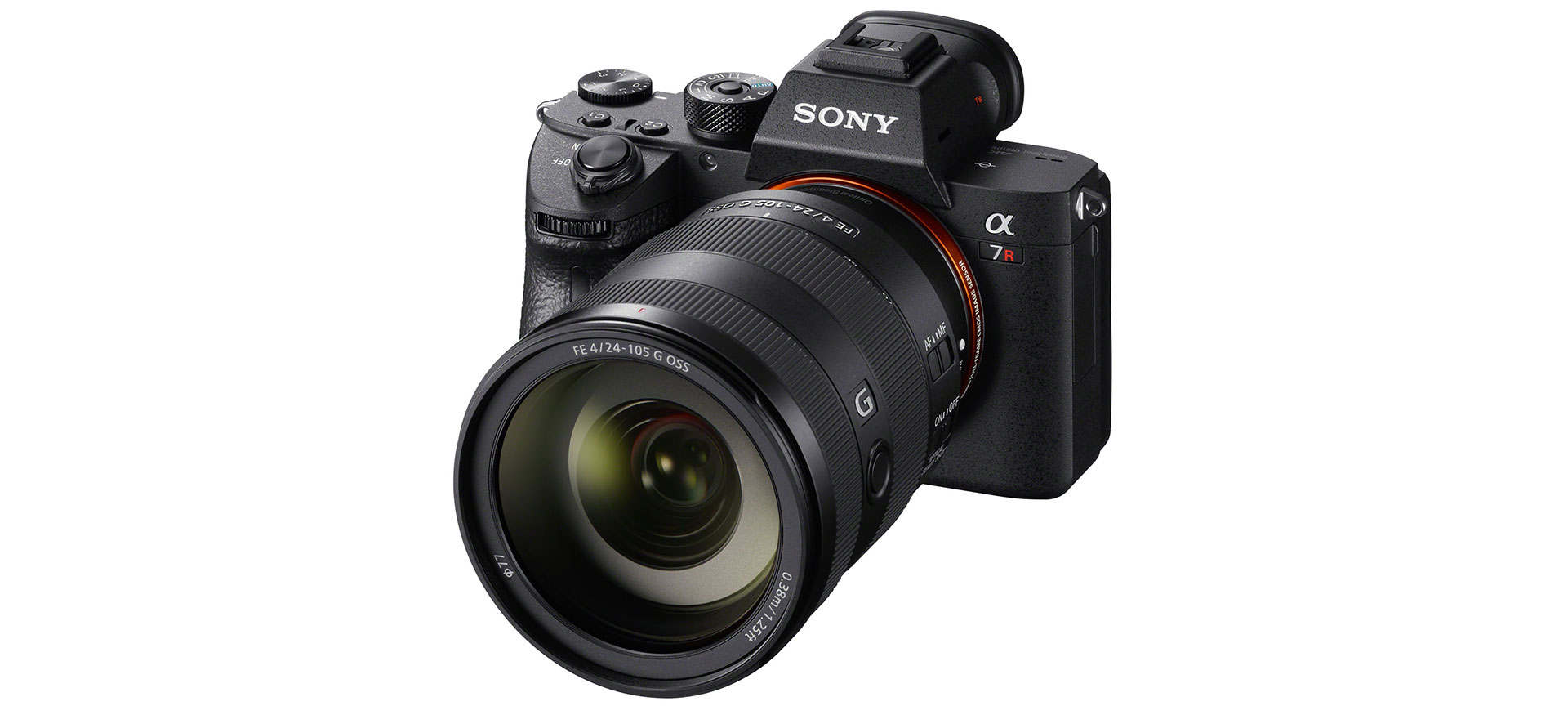
Faster A7R III and two new Sony lenses announced
Sony has taken some of its latest technology from the A9 and included it in the speedy new A7R III mirrorless camera, an update on the current A7R II.
A lightweight new 24-105mm f/4 lens to accompany the camera has also been revealed, as well as the promise of a 400mm f/2.8 super telephoto to further boost Sony’s credentials as a serious player in the sports and wildlife market
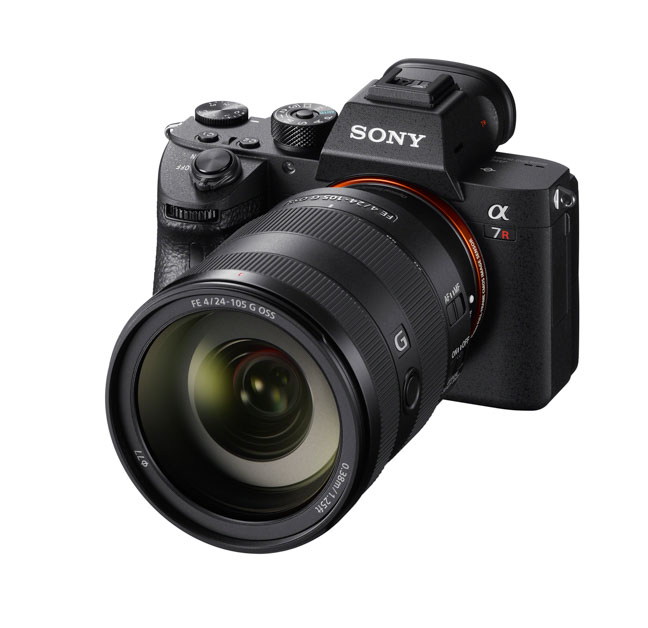
The new £3200 camera still uses the same 42 megapixel BSI CMOS sensor as the Mark II, but hardware and software changes increase dynamic range up to 15 stops. The A7R III now allows 10fps continuous shooting with AF, five-axis image stabilisation dual SD card slots, and a new body which has the A9-style rear AF joystick and AF-ON button. It also gets the improved A9 viewfinder and the larger-capacity A9 battery.
{source}
<iframe width=”560″ height=”315″ src=”https://www.youtube.com/embed/6-811lVi0Qc” frameborder=”0″ allowfullscreen></iframe>
{/source}
The camera also has a new Pixel Shift Multi-Shooting Mode which takes four images, by moving the sensor by one pixel for each shot, similar to features found on some Olympus mirrorless cameras. The images can then be combined using Sony’s new Imaging Edge software for improved colour and resolution.
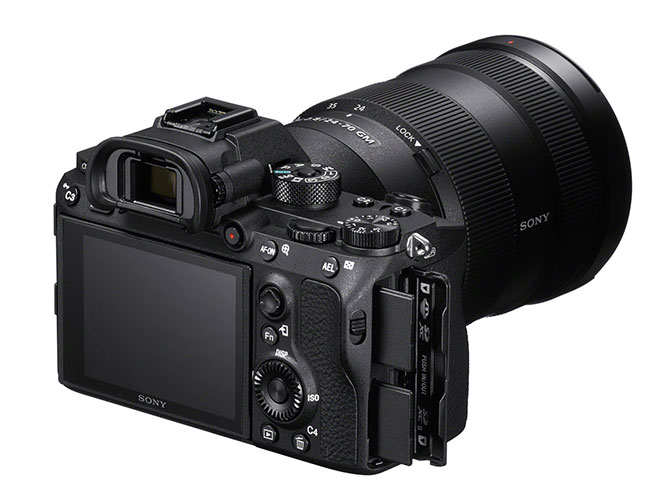
The A7R III will shoot 76 JPEG, or 29 Raw images when shooting at 10fps with continuous AF, using either the silent or mechanical shutter.
For video shooters, there is 4K recording that uses full-pixel readout without pixel binning. It now supports Hybrid Log-Gamma for HDR video recording, and instant playback with compatible 4K HDR TVs but the HDMI output is still 8-bit.
There are S-Log2 and S-Log3 options, for a wide dynamic range of up to a claimed 14 stops. There’s also a new S-Gamut3/S-Gamut3.Cine wide colour space.
There a Super 35mm mode, and a new Slow and Quick Motion Mode where frame rates from 1 fps to 120 fps can be selected in eight steps for up to 60x quick motion and 5x slow motion while recording in full-HD quality.
{source}
<iframe width=”560″ height=”315″ src=”https://www.youtube.com/embed/W6YBnjNOi1U” frameborder=”0″ allowfullscreen></iframe>
{/source}
The camera will go on sale next month, alongside the new full-frame FE 24-105mm F4 G OSS lens. The £1200 lens has a minimum focus distance of 38cm, weighs just 663g and has built-in optical image stabilisation.
Sony has also confirmed it is working on a 400mm f/2.8 telephoto lens that will be on sale next summer. This will be a large and expensive lens, forming part of the G-Master series of high-end full-frame optics. It’s the first fast super-telephoto prime in a E-mount to be released by the company.
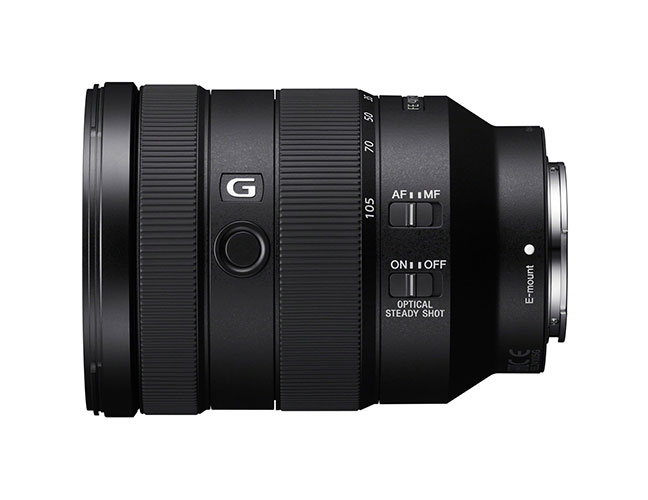
The official information from Sony says:
- Innovative Full-frame Mirrorless Model Offers 42.4 MP High-Resolution, 10 fps Continuous Shooting, Fast and Precise AF Performance in a Compact Body
- 35mm Full-Frame 42.4 MP[i] Back-Illuminated Exmor R™ CMOS Image Sensor with Evolved Image Processing
- Continuous Shooting at up to 10 fps[ii] with either Silent Shooting or Mechanical Shutter and full Auto Focus/Auto Exposure tracking
- 399 phase-detection AF points covering 68%[iii] of image area, 425 contrast AF points and approximately 2 times more effective Eye AF[iv]
- 5-axis optical in-body image stabilization with a 5.5 step[v] shutter speed advantage
- High Resolution 4K[vi] Movie Shooting with full pixel readout and no pixel binning[vii]
- Completely redesigned for professionals, including upgraded Auto Focus, Dual SD Card Slots, Extended Battery Life, SuperSpeed USB (USB 3.1 Gen 1) USB Type-C™ Terminal and more
Compact, Lightweight body at only 23 oz[viii]
Sony today announced an impressive addition to their full-frame mirrorless camera line-up, the α7R III (model ILCE-7RM3).
Thanks to an evolutionary leap in image processing power and efficiency, the new α7R III combines a high-resolution 42.4 MPi back-illuminated Exmor R CMOS image sensor with impressive shooting speeds at up to 10 fpsii with full AF/AE tracking, as well as beautiful image and 4K6 video quality, wide 15-stop9 dynamic range, high sensitivity with noise reduction of almost a full stop4 and more. With these immense capabilities and a compact, lightweight body, it’s an extremely versatile tool for photographers, videographers, multi-media creators and all other types of professionals that demand reliability, flexibility and versatility.
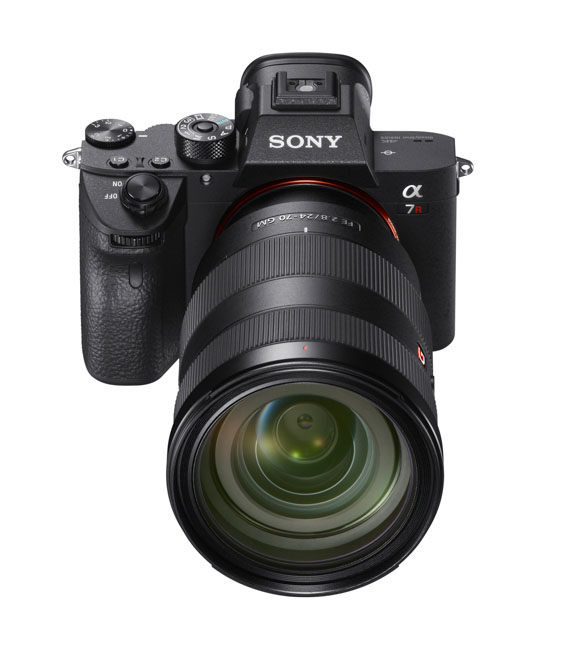
A New Level of Image Quality
The 42.4MP high-resolution, back-illuminated Exmor R CMOS image sensor utilises a gapless on-chip lens design and AR (anti-reflective) coating on the surface of the sensor’s seal glass to dramatically improve light collection efficiency, resulting in high sensitivity with low-noise performance and wide dynamic range.
Sony’s new α7R III also features a new front-end LSI that effectively doubles* the readout speed of the image sensor, as well as an updated BIONZ X™ processing-engine that boosts processing speed by approximately 1.8 times compared to the α7R II. These powerful components work together to allow the camera to shoot at faster speeds while also enabling its impressive ISO range of 100 – 32000 (expandable to ISO 50 – 102400 for still images) and massive 15-stop[ix] dynamic range at low sensitivity settings. This ensures outstanding overall performance at all settings and in all shooting conditions.
This new full-frame model was built without an optical low pass filter to maximise resolution, while also having the ability to output 14 bit RAW format even when shooting in silent or continuous mode. The camera is equipped with an innovative 5-axis optical image stabilisation system that has been fine-tuned to support its high-resolution shooting capacity, resulting in a 5.5 stepv shutter speed advantage, the world’s highest[x] compensation performance for an image stabilisation system. There is also a new low-vibration shutter that reduces vibration and image blur in all modes, including the high speed 10 fps shooting, as well as several advancements in accurate colour reproductions of skin tones.
High-Performance AF and AF/AE Tracking at up to 10 fps
The innovative new α7R III full-frame mirrorless camera is equipped with a refined image processing system that allows it to shoot full 42.4MP images at up to 10 fps with continuous, accurate AF/AE tracking for up to 76 JPEG / RAW images or 28 uncompressed RAW images[xi]. This high speed 10 fps mode is available with either a mechanical shutter or a completely silent shooting[xii], adding to the immense flexibility of the camera. The camera can also shoot continuously at up to 8 fps[xiii] in live view mode with minimal lag in the viewfinder or LCD screen. These high speed options ensure that fast moving subjects can be captured with extreme accuracy and incredible image detail.
For added convenience, while large groups of burst images are being written to the memory card, many of the cameras key functions are operable, including access to the ‘Fn’ (Function) and ‘Menu’ buttons, image playback and several other menus and parameters* including image rating and other functions that facilitate on-location image sorting.
Additionally, if there is fluorescent or artificial lighting present in a shooting environment, users can activate the Anti-flicker[xiv] function to allow the α7R III to automatically detect frequency of the lighting and time the shutter to minimise its effect on images being captured. This minimises any exposure or colour anomalies that can sometimes occur at the top and bottom of images shot at high shutter speeds.
The upgraded focusing system of the α7R III is comprised of 399 focal-plane phase-detection AF points that cover approximately 68% of the image area in both the horizontal and vertical directions. There is also 425 contrast AF points, an increase of 400 points compared to the α7R II. This advanced system delivers AF acquisition in about half the time as the α7R II in low-light conditions, with tracking that is approximately 2 times more accurate as well. The acclaimed Eye AF feature is also approximately 2 times more effective, and is available when utilising Sony’s A-mount lenses with an adapter.[xv]
Additional improvements in focusing flexibility include AF availability in Focus Magnifier mode, focal-plane phase-detection AF support when using A-mount lenses[xvi], an ‘AF On’ button, a multi-selector or ‘joystick’ for moving focusing points quickly, flexible touch focus functionality and much more.
High Quality 4K for the Video Professionals
The new α7R III is exceptionally capable as a video camera, offering 4K (3840×2160 pixels) video recording across the full width of the full-frame image sensor. When shooting in Super 35mm format, the camera uses full pixel readout without pixel binning to collect 5K[xvii] of information, oversampling it to produce high quality 4K footage with exceptional detail and depth.
A new HLG (Hybrid Log-Gamma)[xviii] is available on the α7R III that supports an Instant HDR workflow, allowing HDR (HLG) compatible TV’s to playback beautiful, true-to-life 4K HDR imagery. Further, both S-Log2 and S-Log3 are available for increased colour grading flexibility. The camera can also record Full HD at 120 fps at up to 100 Mbpsvi, allowing footage to be reviewed and eventually edited into 4x or 5x slow motion[xix] video files in Full HD resolution with AF tracking.
Build, Design and Customisation for Professionals
Sony’s newest full-frame camera is equipped with a variety of enhanced capabilities that give it a true professional operational style. These include dual media slots, with support in one slot for UHS-II type SD memory cards. Users have a variety of options for storing their content, including separate JPEG / RAW recording, separate still image / movie recording, relay recording and more. Battery life has been greatly extended as well, as the new camera utilises Sony’s Z series battery that have approximately 2.2 times the capacity of the W series battery utilised in the α7R II.
The α7R III features an upgraded high-resolution, high-luminance Quad-VGA OLED Tru-Finder™ with approximately 3,686k dots for extremely accurate, true-to-life detail reproduction. The Tru-Finder, also found in the acclaimed Sony α9 camera, utilises a ZEISS® T* Coating to greatly reduce reflections, and has a fluorine coating on the outer lens that repels dirt. It also has a customisable frame rate, with options of either 50 fps or 100 fps[xx] to best match the action. The LCD screen has been upgraded as well, with a resolution of 1.44M dots and WhiteMagic™ technology that improves viewing in bright, outdoor conditions. “Standard” or “High” display quality settings are also available for both the viewfinder and monitor as well. “High” takes advantage of the large amount of data read from the 42.4MP sensor to provide extra fine viewfinder and monitor displays for a more natural view.
The new camera also offers a multi-selector joystick that provides a fast, efficient way to shift focus points, as well as an ‘AF ON’ button to activate autofocus when shooting stills or movies.
The new α7R III allows for convenient transfer of files to a smartphone, tablet, computer or FTP server via Wi-Fi®, while also including a sync terminal, enabling external flash units and cables to be connected directly for convenient flash sync. A SuperSpeed USB (USB 3.1 Gen 1) USB Type-C™ Terminal is also available for increased flexibility in power supply or connected accessories, as well as a faster image transfer speed when connected to a PC.
New “Imaging Edge” Software Suite and Pixel Shift Multi Shooting Mode
New with the α7R III is a software suite called “Imaging Edge” that extends the creative capabilities of the entire shooting process – from pre-processing to post-processing. “Imaging Edge” provides three PC applications called ‘Remote’, ‘Viewer’ and ‘Edit’, available for free download, which support live-view PC remote shooting and RAW development.
Also making its debut on the versatile α7R III is a new Pixel Shift Multi Shooting mode, which takes full advantage of the advanced 5-axis optical in-body stabilisation to create beautiful true-to-life, super-high resolution composite images. In this mode, the camera precisely shifts the sensor in 1-pixel increments to capture four separate pixel-shifted images containing a total of approximately 169.6 MP* of image data. These four images can be composited together and processed utilising the new “Imaging Edge” software suite. This ultimately results in a still image with overwhelming resolution and an unprecedented level of colour accuracy, and is ideal for photographing architecture, art or any other still life photography subject with many intricate details and colours.
Pricing and Availability
The Sony α7R III Full-frame Interchangeable Lens Camera will ship in Europe in November 2017, priced at approximately £3,200 and €3,500 respectively.
[1]Approximately, effective
[1]Up to 10 fps in continuous “Hi+” mode, and up to 8 fps in continuous “Hi” mode. Maximum fps will depend on camera settings
[1]Approximately 68% of the image area in both the horizontal and vertical directions
[1]Compared to the α7R II, according to Sony testing
[1]CIPA standards. Pitch/yaw shake only. Planar T* FE 50mm F1.4 ZA lens. Long exposure NR off
[1]A Class 10 or higher SDHC/SDXC memory card is required for XAVC S format movie recording. UHS speed class 3 or higher is required for 100 Mbps recording
[1]In Super 35mm mode.
[1]Approximately
[1]Sony test conditions for still images
[1]Among digital cameras with a full-frame image sensor. As of October 2017 press release, based on Sony research
[1]“Hi+” continuous mode with UHS-II compatible SDXC memory card. Sony test conditions.
[1]Some distortion may occur with fast-moving subjects of if the camera is moved sideways rapidly
[1]“Hi” mode. Maximum fps will depend on camera setting.
[1] Not all menu parameters can be edited while data is being written to the memory card
[1]Only 100 Hz and 120 Hz flicker is detected. Continuous shooting speed may decrease. Flicker-free shooting is not available during silent shooting, BULB exposure, or movie recording
[1]With SSM or SAM lenses only. Eye AF not supported for movie recording. AF-C can only be used when the “Phase detection” AF system is selected, but focus is fixed at the first frame during continuous shooting in any mode other than “Continuous: Lo” (Hi+, Hi, Mid).
[1]With SSM or SAM lenses only. With the LA-EA3 mount adapter. Focal plane phase-detection AF not supported for movie recording. AF-C can only be used when the “Phase detection” AF system is selected, but focus is fixed at the first frame during continuous shooting in any mode other than “Continuous: Lo” (Hi+, Hi, Mid).
[1]15-megapixel
[1]Connect this product to an HDR (HLG) compatible Sony TV via a USB cable when displaying HDR (HLG) movies
[1]Sound not recorded. Class 10 or higher SDHC/SDXC memory card required
[1]In PAL. 60fps or 120fps in NTSC
[1]Image size after compositing is approx. 42.4 million (7952 x 5304) pixels.
New E-mount FE 24-105mm F4 G OSS Standard Zoom
New E-mount FE 24-105mm F4 G OSS Standard Zoom Delivers Serious Still and Video Performance with Compact Design
Sony today announced the latest addition to its expanding full-frame E-mount lens line-up, the FE 24-105mm F4 G OSS Standard Zoom (model SEL24105G).
The new full-frame lens covers the commonly used 24 to 105mm focal length range, delivering outstanding G Lens™ imaging performance with the most lightweight design in its class[i], maximising its versatility and usability. Therefore, the FE 24-105mm F4 G OSS can be used for versatile shooting including landscapes, portraits, weddings and more. This lens also features fast, precise and quiet autofocus capabilities in both still and video shooting, making it an ideal complement for Sony’s extensive line-up of E-mount cameras.
High Optical Performance and Outstanding Resolution
Sony’s new FE 24-105mm F4 G OSS lens delivers excellent corner-to-corner sharpness throughout the entirety of its zoom range, while also producing beautifully rendered ‘bokeh’ or background defocus at all focal lengths.
This high image quality is made possible thanks to its advanced optical design featuring four aspherical lens elements, two of which are high precision AA (advanced aspherical) lenses. There are also three strategically located ED (Extra-low Dispersion) glass elements that work in combination with the aforementioned aspherical lens elements to minimise chromatic aberration and ensure the ultimate resolution is captured.
The lens also has Sony’s original Nano AR coating to minimise flare and ghosting, and utilises a circular aperture to ensure it delivers high quality bokeh that is consistent for all Sony’s G series.
Compact, Lightweight Design and Shooting Flexibility
The new FE 24-105mm F4 G OSS lens weighs in at approximately 663 grams (23.4 oz), making it the lightest lens in its classi. When combined with one of Sony’s compact E-mount bodies, it gives photographers and videographers a far more mobile, manageable camera system that greatly increases their shooting flexibility.
In addition to the compact design and versatile 24-105mm focal length, the new lens has a minimum focus distance of 1.25ft, allowing for impressive close up detail. It also includes built-in optical image stabilisation to make it easier to produce sharp, blur-free images when shooting handheld.
Highly Advanced and Accurate AutoFocus
In order to keep up with fast-moving subjects, the new standard zoom lens features a DDSSM (Direct Drive SSM) system that is capable of rapid positioning of the lens’ focus groups with high accuracy and very minimal noise. This advanced system combined with a constant F4 aperture at all focal lengths makes the SEL24105G an excellent choice for both still and video shooting.
Further adding to its versatility, the new standard zoom lens also features a customisable focus hold button, a dust and moisture resistant design[ii] and a fluorine coating on the front element to help minimise dust, water, oil and other contaminants.
Pricing and Availability
The Sony SEL24105G Lens will ship in Europe in November 2017, priced at approximately £1,200 and €1,350 respectively.
[i]Compared to currently available full-frame 24-105mm F4 standard zoom lenses (October 25th, 2017, Sony research)
[ii]Not guaranteed to be 100% dust and moisture proof
FE 400mm F2.8 GM OSS Super-Telephoto
Sony today announced the development of the long-awaited FE 400mm F2.8 GM OSS Super-Telephoto lens, with a target launch date in Summer 2018.
The new lens will feature the incredible high-resolution and spectacular beautiful bokeh of Sony’s acclaimed line of flagship G Master™ series lenses, while also offering a far-reaching 400mm focal length and F2.8 large aperture. This combination will deliver a new elevated shooting experience for all professional sports, news and wildlife photographers looking to capture all of the decisive moments with higher image quality.
Sony will continue to evolve their lens line-up in order to meet the demands of all types of photographers, videographers and multi-media creators, with many different offerings to maximise the power of the innovative α™ camera line-up.
Additional details and specifications on the new FE 400mm F2.8 GM OSS Super-Telephoto Lens will be released at a later date.


